Oxford is known for its beautiful spires and rich traditions. But there's more to its history than meets the eye. The Uncomfortable Oxford Tour challenges visitors to confront the city's complex and often overlooked historical narratives. Participants are encouraged to question long-held beliefs and gain a deeper understanding of Oxford's rich, yet troubled, history.
On this tour, you'll discover:
- Thought-provoking insights into Oxford's lesser-known histories
- Exploration of the city's colonial connections and their modern consequences
- Engagement with diverse perspectives and underrepresented narratives
- Opportunities to challenge your own preconceptions and biases
Origins of the Uncomfortable Oxford Tour
The Uncomfortable Oxford Tour is a student-led enterprise that was launched in 2018 in response to the Black Lives Matter and Rhodes Must Fall campaigns. The objective was to stimulate discussion and debate about Oxford’s history.
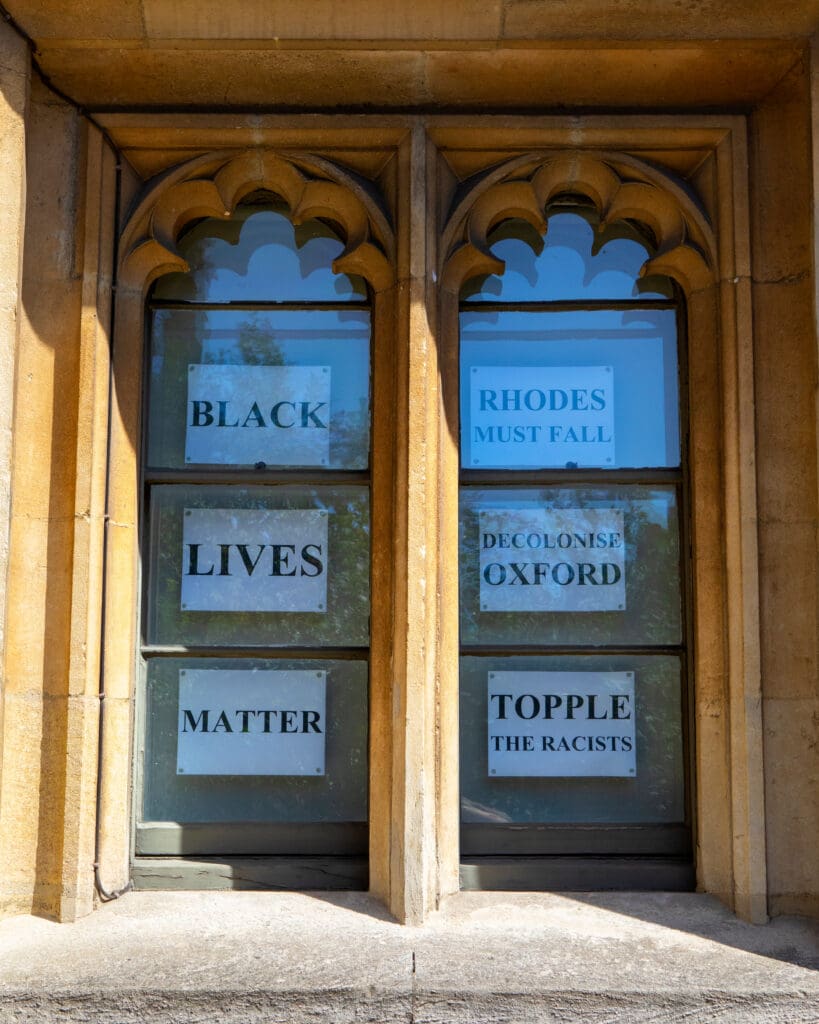
Oxford's history has its dark side. The tour looks at how the university was linked to the British Empire. It shows how Oxford gained from and helped keep colonial power. The Uncomfortable Oxford Tour also focuses on the stories often ignored. It tells of women, minorities, and the working class's roles in the city's history. These stories give a fuller picture of Oxford's past, questioning the usual stories we hear.
How is the Uncomfortable Oxford Tour changing the narrative?
| Conventional Narrative | Alternative Perspective |
| Oxford is a bastion of tradition and academic excellence. | Oxford's history is also marked by exclusion and discrimination against marginalised communities. |
| The university's founders and benefactors are celebrated as visionary leaders. | Some of Oxford's historical figures were complicit in or directly involved in unethical practices, such as slavery and colonialism. |
| Oxford's architectural splendour is a testament to its cultural and intellectual prowess. | The grandeur of Oxford's buildings was, in some cases, funded by wealth derived from exploitative practices. |

What can you expect from the Original Uncomfortable Oxford tour?
Stop 1: The town v gown divide
The meeting point is at Carfax tower in the city centre. Carfax means crossroads and is located close to the original settlement of oxen-ford. This stop gives an introduction to the founding of Oxford and the dynamics between the residents (town) and university community (gown).

The city of Oxford grew after King Henry II banned English students from studying in France in 1167. The colleges and private halls started attracting wealthy students. They lived in colleges behind big iron gates designed to keep students in and the town out. This created tension between the town and gown.
The tension boiled over on 10 February 1355 when a brawl broke out between students and a bar owner over the quality of the wine served. This escalated into a widespread fight that left 60 students and 30 townspeople dead. The event is known as the St Scholastica’s Day Massacre and changed the dynamics between the two groups. The King gave the university more power over the town which persists to this day.
The bar where this pivotal event took place was called Swindlestock (or Swyndlestock) Tavern. Today, the building is a branch of Santander bank and is owned by Christ Church. Opposite Santander is the Oxford Town Hall. The Town Hall and the Carfax Tower are the only buildings in the vicinity that are not owned by Oxford colleges.
Read more about the history of Oxford in our About Oxford section.
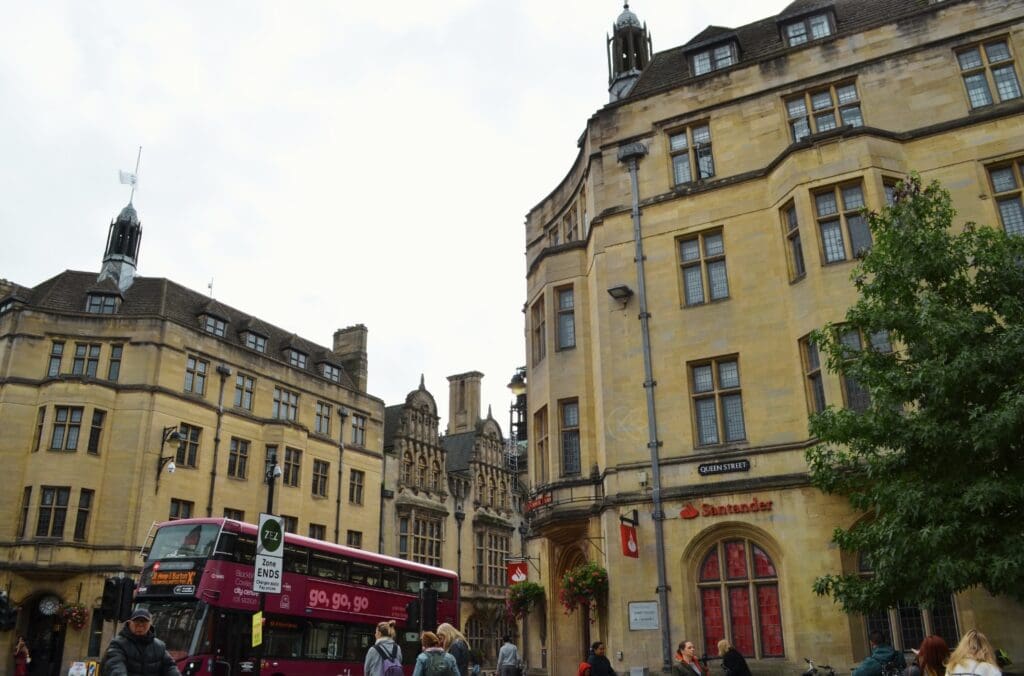
Stop 2: Cecil Rhodes statue at Oriel college
The Rhodes building on the High Street was the epicentre of the Rhodes Must Fall protests in 2015. Protestors called for the removal of the statue of the late British colonialist and mining magnate, Cecil John Rhodes.
When Rhodes died in March 1902, he left his old college, Oriel, the sum of £100,000 (£10.3m today). He allocated £22,500 towards the construction of the new building and another £17,500 to compensate the college for the lost revenue from the shops and houses that were torn down to make way for the new building. The city of Oxford was not compensated.

The building was constructed between 1909 and 1911. The statue of Cecil Rhodes was designed by Henry Pegram and depicts Rhodes wearing a suit with one foot forward. Beneath the statue are the words: e Larga MVnIfICentIa | CaeCILI rhoDes. This is translated as ‘Out of the splendid generosity of Cecil Rhodes’.
Rhodes appears to be looking down on the street and the six statues that were placed beneath him. The statues include two kings and four heads of college, who were either cardinals or bishops.
The tour provokes discussion and debate about Rhodes’ contribution to colonialism and the controversial decision not to take down the statue after donors at Oriel threatened to withdraw more than £100m in funding.
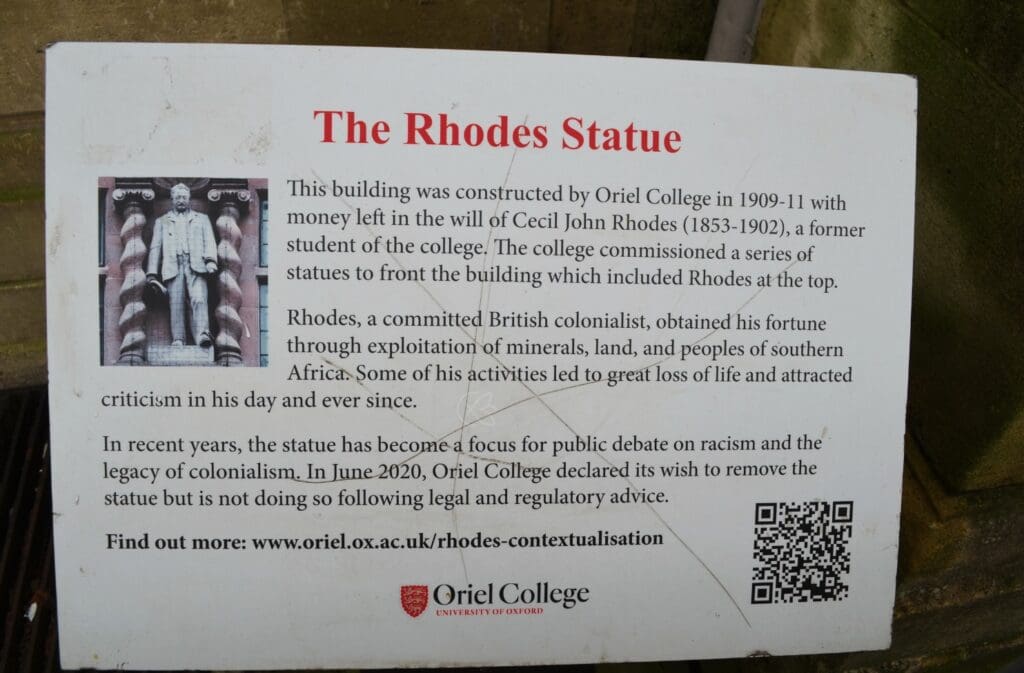
Stop 3: All Souls college and the slave owner
The Rhodes Must Fall campaign exposed other controversial benefactors of the university. Christopher Codrington was another coloniser who made his fortune as one of the largest plantation owners in Barbados. He had over 300 slaves.
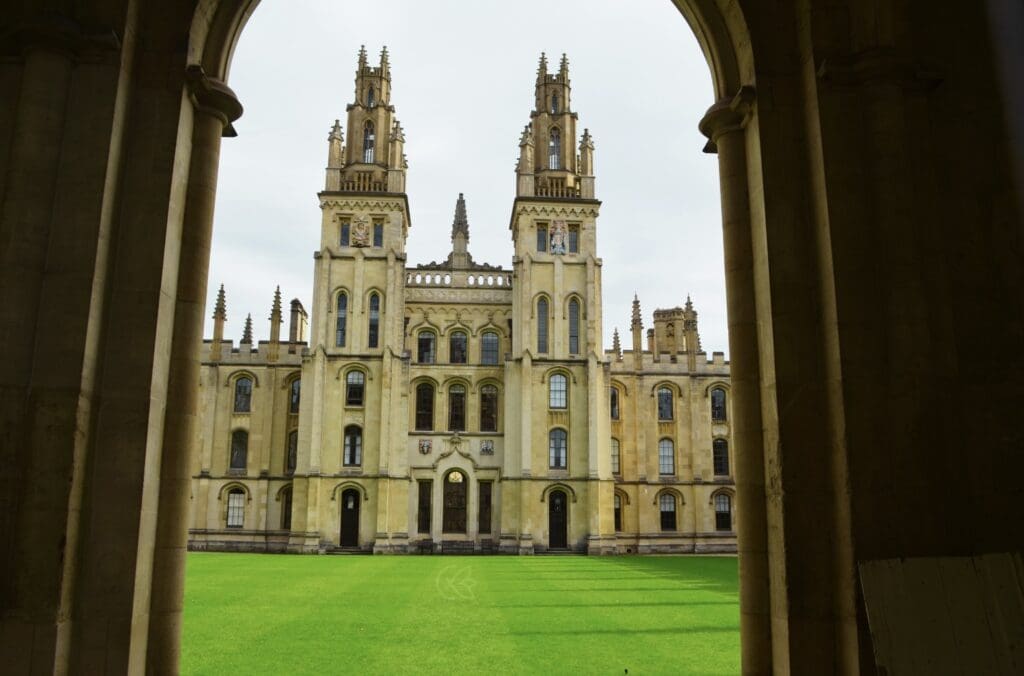
Codrington was educated at Christ Church and then elected to All Souls College in 1690. After his death in 1710, Codrington was buried in the All Souls chapel. In his will, Codrington left the college £10,000 (£1.4m today) and £6,000 worth of books for the library that was named after him. A statue was erected in his honour.
Following the recent controversy, All Souls dropped the name of the library in 2021 but did not remove the statue. They also erected a plaque outside the library that says: In memory of those who worked in slavery on the Codrington plantations in the West Indies. All Souls is one of the most inaccessible colleges in Oxford and the plaque is hidden to most.
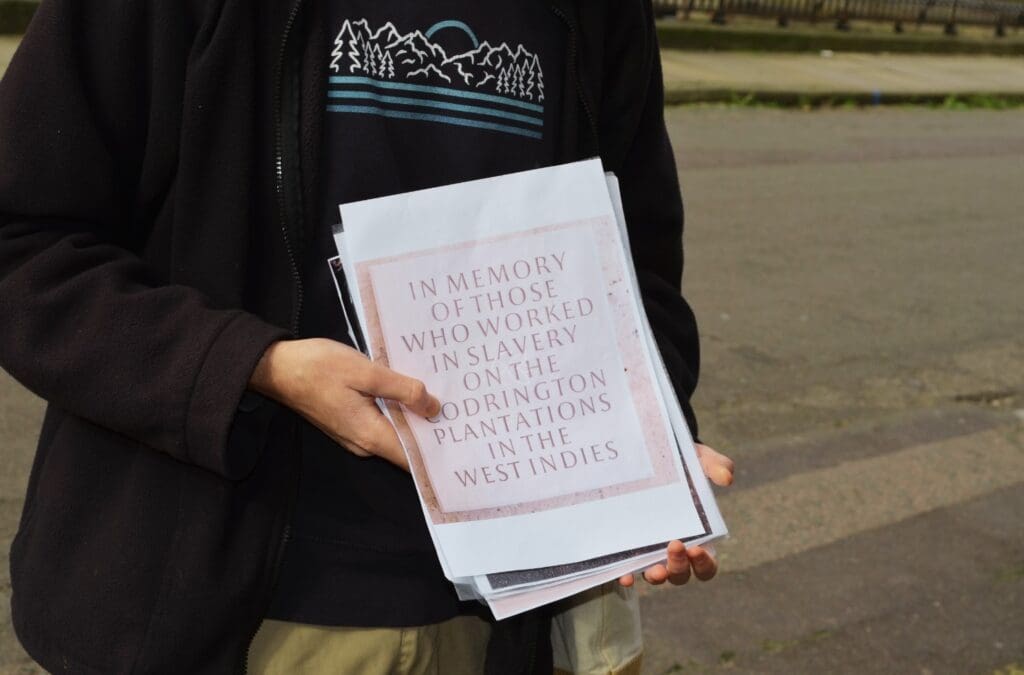
Stop 4: Bodleian Library
Christian Frederick Cole was the first black person to graduate from Oxford and the first black African barrister to practise in England. Cole came from Sierra Leone and was admitted to Oxford in 1873 to read the Classics. He was a non-collegiate student as no college would admit a black man and was repeatedly ridiculed during his time there.
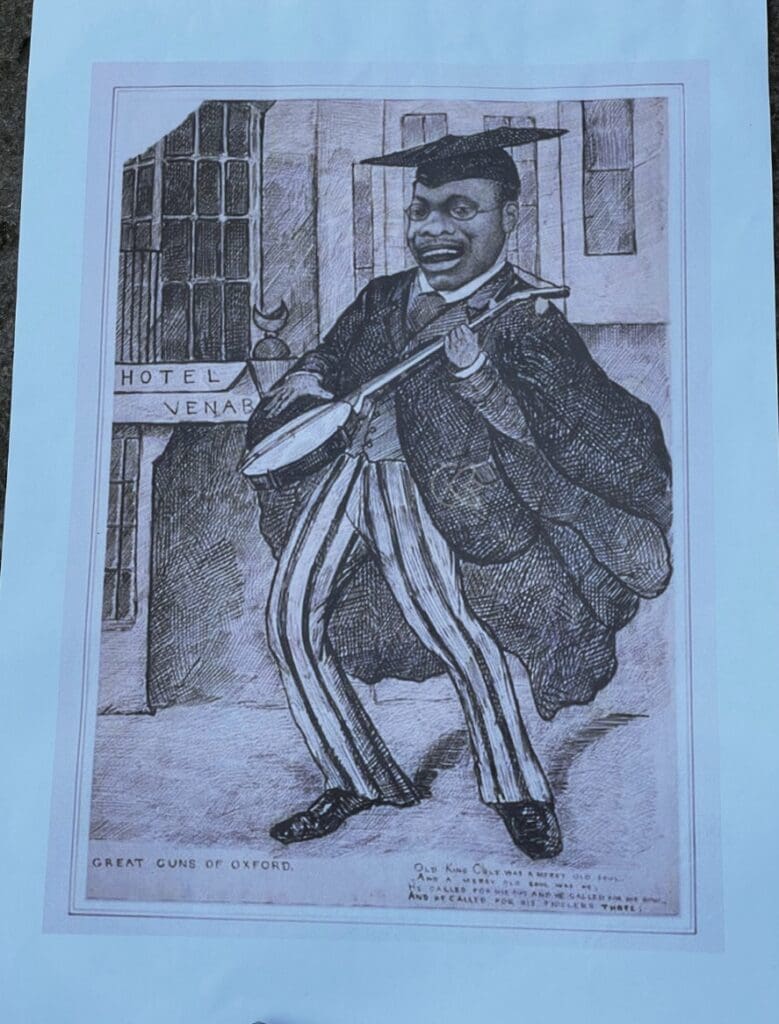
The son of a reverend, Cole had to pay his way through university. He made money by tutoring and giving piano lessons. He graduated with a fourth-class degree in 1876 and was then accepted by University College.
Cole practised law in England and later moved to Zanzibar. Tragically, he contracted smallpox soon after and died in 1885 at the young age of 33.
Final stop: Sheldonian Theatre
Women were the other group that was marginalised at Oxford. The Greek heads statue on the exterior of the Sheldonian Theatre are of men, reflecting the perception that knowledge, power and wisdom was the preserve of men.
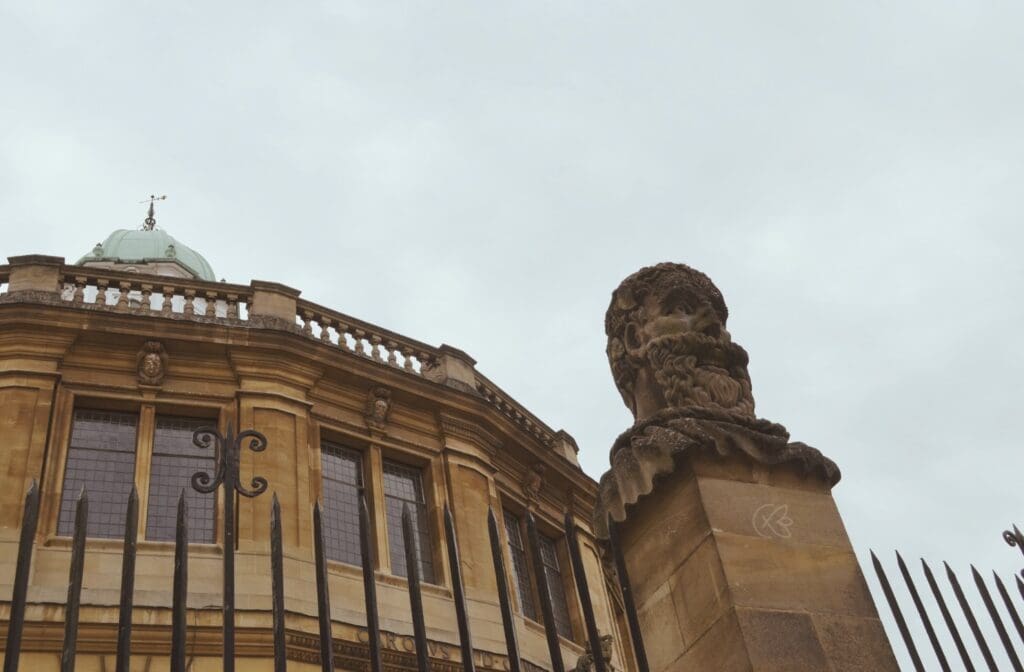
Women started studying in Oxford from 1879 with the establishment of Lady Margaret Hall in 1878 and Somerville in 1879. The opening of St Hughs in 1826 and St Hilda’s in 1889 created more opportunities for women. The four colleges were located some distance from the city centre. This is significant because women were not allowed to enter university buildings and therefore could not matriculate and graduate.
The workaround was that women would study at their college and then take exams. Once they had their results, they would take a steamboat to Trinity College in Ireland. Oxford, Cambridge and Trinity College had an ad eundem arrangement that allowed students to graduate from any of the three institutions. The female students became known as the Steamboat Ladies.
The University of Oxford started admitting women in 1920, which allowed those who had previously studied to matriculate and graduate. Despite the progress, it took decades for other colleges to admit women. Hertford was next in 1974 and Oriel was the last in 1986.
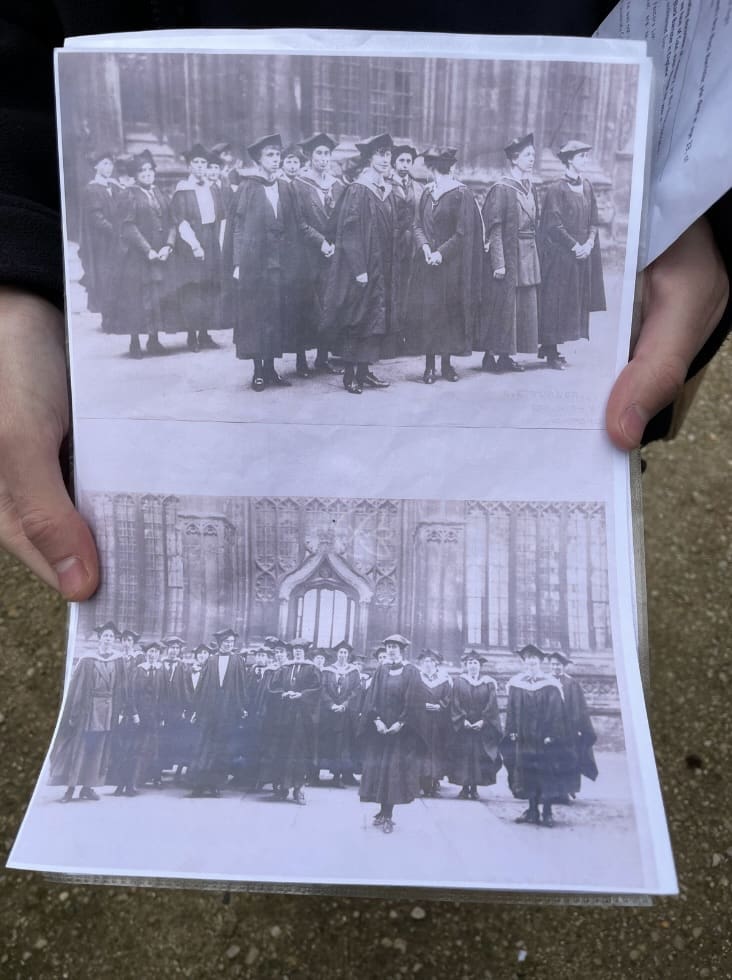
Conclusion
The Uncomfortable Oxford Tour shows how the past affects us today. Most of what we know about Oxford's past focuses on the powerful few. The Uncomfortable Oxford tour goes deeper, showing the lives of those left behind. It makes us question what we've always thought was true.
"The Uncomfortable Oxford tour is a powerful reminder that history is not a fixed, objective record, but rather a narrative shaped by those in power. It invites us to question the stories we've been told and to uncover the diverse experiences that have been excluded from the dominant historical accounts."


